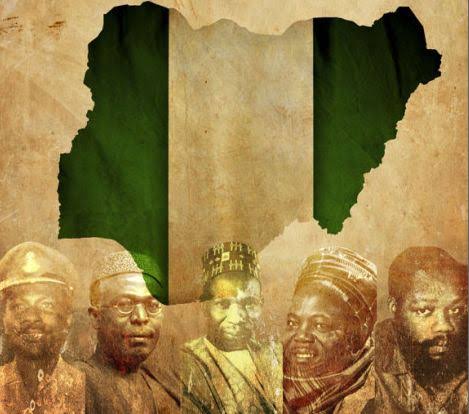Nigeria boasts a rich and intricate history, spanning epochs from ancient civilizations to its current status as a democratic nation. In this article, we embark on a journey to uncover the significant events, notable individuals, and diverse cultures that have sculpted the Nigeria we recognize today.
The Pre-Colonial Era
Prior to European intervention, Nigeria harbored various kingdoms, empires, and states, each possessing distinct political, economic, and social systems. Among the most noteworthy are:
- Nok Culture: Emerging around 1000 BC, the Nok culture stands as one of West Africa’s earliest and most advanced civilizations. Hailing from the region that now encompasses northern Nigeria and southern Niger, the Nok people are famed for their distinctive terracotta sculptures, iron smelting prowess, and intricate trade networks.
- Kanem-Bornu Empire: Stretching from the 9th to the 19th century, the Kanem-Bornu Empire held dominion over regions now belonging to Nigeria, Chad, Niger, Cameroon, and Libya. Founded by the Kanembu people, later amalgamated with the Bornu people, the empire earned recognition for its military might, cultural diversity, and contributions to Islamic scholarship.
- Hausa States: Unfolding in the 11th century across northern Nigeria and southern Niger, the Hausa States constituted an assembly of independent city-states. The Hausa people, characterized by a shared language, culture, and Islamic faith, excelled in trade, agriculture, and architectural achievements.
- Oyo Empire: Flourishing from the 15th to the 19th century, the Oyo Empire held sway over contemporary southwestern Nigeria, parts of Benin, and Togo. Founded by the Yoruba people, known for their extensive artistic and literary heritage, the empire stood out for its centralized governance, formidable cavalry forces, and diplomatic endeavors.
- Benin Empire: The Benin Empire, with roots from the 13th to the 19th century, thrived across southern Nigeria and parts of Benin. Established by the Edo people, celebrated for their bronze and ivory artworks, urban planning expertise, and advanced political systems, the empire gained renown for its wealth, trade, and artistic achievements.
The Colonial Era
Nigeria’s colonial history commenced in the late 15th century, with Portuguese explorers marking the first European arrival on West Africa’s shores. Subsequently, Britain, France, Spain, and the Netherlands joined the race to claim territories and trade advantages in the region, attracted by valuable commodities like gold, ivory, spices, slaves, palm oil, and rubber.
The British incrementally seized control of Nigeria through treaties, conflicts, and territorial annexations. They established the Colony of Lagos on the coast in 1861, followed by the acquisition of the Oil Rivers Protectorate (later renamed Niger Coast Protectorate) in the south in 1885. In 1900, the Northern Nigeria Protectorate and Southern Nigeria Protectorate took shape within the interior. Finally, in 1914, these territories were amalgamated into one entity named the Colony and Protectorate of Nigeria.
Under British rule, Nigeria underwent significant transformations, including the imposition of political, economic, and social systems. These changes led to exploitation of the nation’s natural resources and human labor. The colonial administration also created divisions along ethnic and religious lines, fostering tensions and resistance among the Nigerian population. The response was the formation of nationalist movements and parties advocating for self-governance and independence.
The Post-Colonial Era
After years of struggle and negotiation, Nigeria celebrated its hard-fought independence from Britain on October 1, 1960. However, this newfound freedom ushered in a series of challenges and conflicts in the nation’s pursuit of unity and progress. Key events of this era include:
- First Republic (1960-1966): Marked by a parliamentary democracy and a federal system of government, the First Republic featured prominent political parties like the Northern People’s Congress (NPC), the National Council of Nigeria and the Cameroons (NCNC), and the Action Group (AG). It was marred by regional tensions, corruption, and electoral irregularities.
- First Military Coup (1966): A group of young army officers, led by Major Chukwuma Kaduna Nzeogwu, staged a violent coup, targeting primarily northern politicians and military officers. This act triggered a counter-coup by northern soldiers and resulted in the assassination of prominent leaders.
- Second Military Coup (1966): Responding to the first coup, a faction of the army loyal to General Johnson Aguiyi-Ironsi took control, abolishing the federal system and declaring a unitary state. This move incited anger in the north and failed to address the violence against the Igbo people in the aftermath of the first coup.
- Biafran War (1967-1970): This devastating civil war erupted when the eastern region, dominated by the Igbo people, seceded to form the Republic of Biafra. The conflict, fought between the federal government and the secessionist state, inflicted immense casualties, famine, disease, and displacement.
- Second Republic (1979-1983): A return to democracy occurred after 13 years of military rule, marked by economic decline, inflation, and corruption. Major political parties included the National Party of Nigeria (NPN), the Unity Party of Nigeria (UPN), the Nigerian People’s Party (NPP), the Great Nigeria People’s Party (GNPP), and the People’s Redemption Party (PRP).
- Third Military Coup (1983): Major General Muhammadu Buhari led a bloodless coup, ousting President Shehu Shagari and dissolving the civilian government. The coup leaders cited the need to restore discipline, integrity, and security.
- Fourth Military Coup (1985): A palace coup deposed Major General Muhammadu Buhari and installed General Ibrahim Babangida. This move garnered support from Nigerians dissatisfied with Buhari’s authoritarian rule. Babangida promised political and economic reforms and a return to democracy.
- Third Republic (1993): A brief attempt at establishing a democratic government, following eight years of military rule. Notable political parties included the Social Democratic Party (SDP) and the National Republican Convention (NRC). The presidential election of June 12, 1993, was seen as free and fair, but it was annulled by General Ibrahim Babangida, leading to an interim government.
- Fifth Military Coup (1993): General Sani Abacha forcefully seized power, toppling the interim government of Ernest Shonekan. Abacha suspended the constitution, banned political parties and activities, and imposed a repressive military regime, with many pro-democracy activists, including Moshood Abiola, detained and persecuted.
- Fourth Republic (1999-present): The current democratic era commenced after General Sani Abacha’s death in 1998 and the subsequent transition to civilian rule under General Abdulsalami Abubakar. The dominant political parties have included the People’s Democratic Party (PDP), the All Nigeria People’s Party (ANPP), and the Alliance for Democracy (AD). The Fourth Republic has seen several successful presidential elections, with leaders like Olusegun Obasanjo, Umaru Yar’Adua, Goodluck Jonathan, and Muhammadu Buhari emerging as winners.
The Fourth Republic, while experiencing growth, still grapples with pressing issues. These include ethnic and religious conflicts, corruption, economic diversification, and human capital development. The nation’s future hinges on its ability to harness its human and natural resources and address both internal and external challenges.
Conclusion
Nigeria’s history is a tapestry of diverse experiences, from its pre-colonial origins to the complexities of the present day. It has witnessed pivotal events, illustrious figures, and vibrant cultures that have molded its identity and destiny. Though Nigeria has made substantial strides across various aspects of national life, the potential for further achievement remains vast. The nation’s future rests on effective utilization of its human and natural resources, as well as its capacity to surmount internal and external hurdles.


